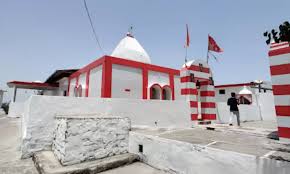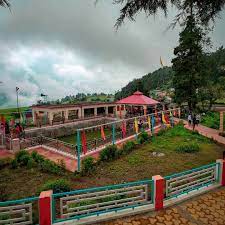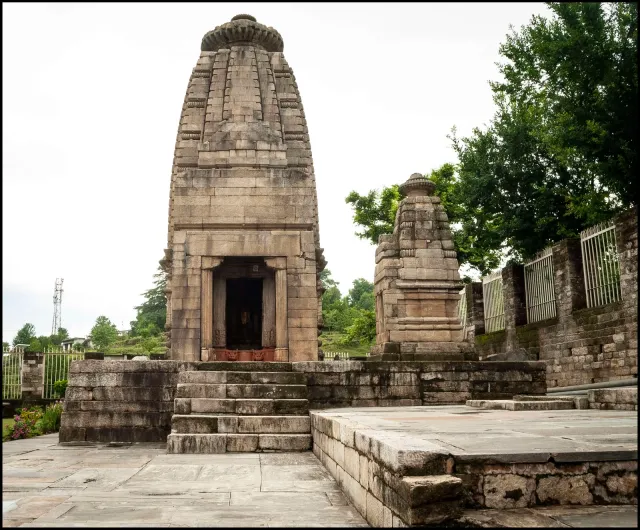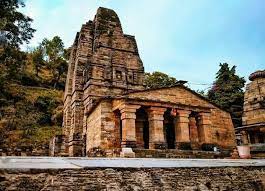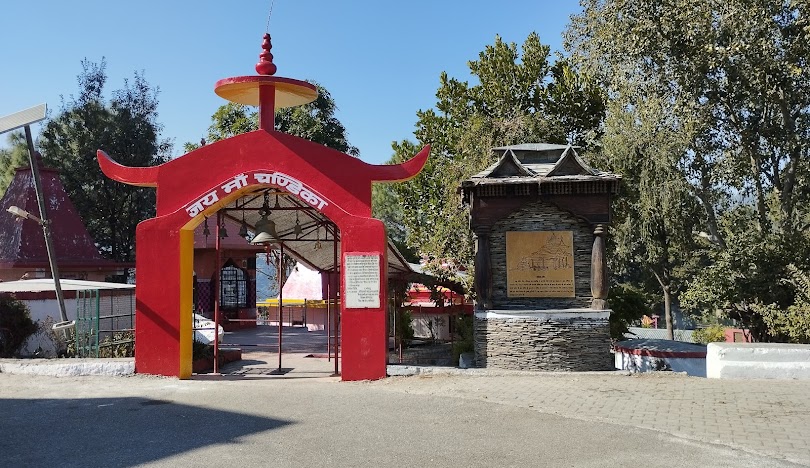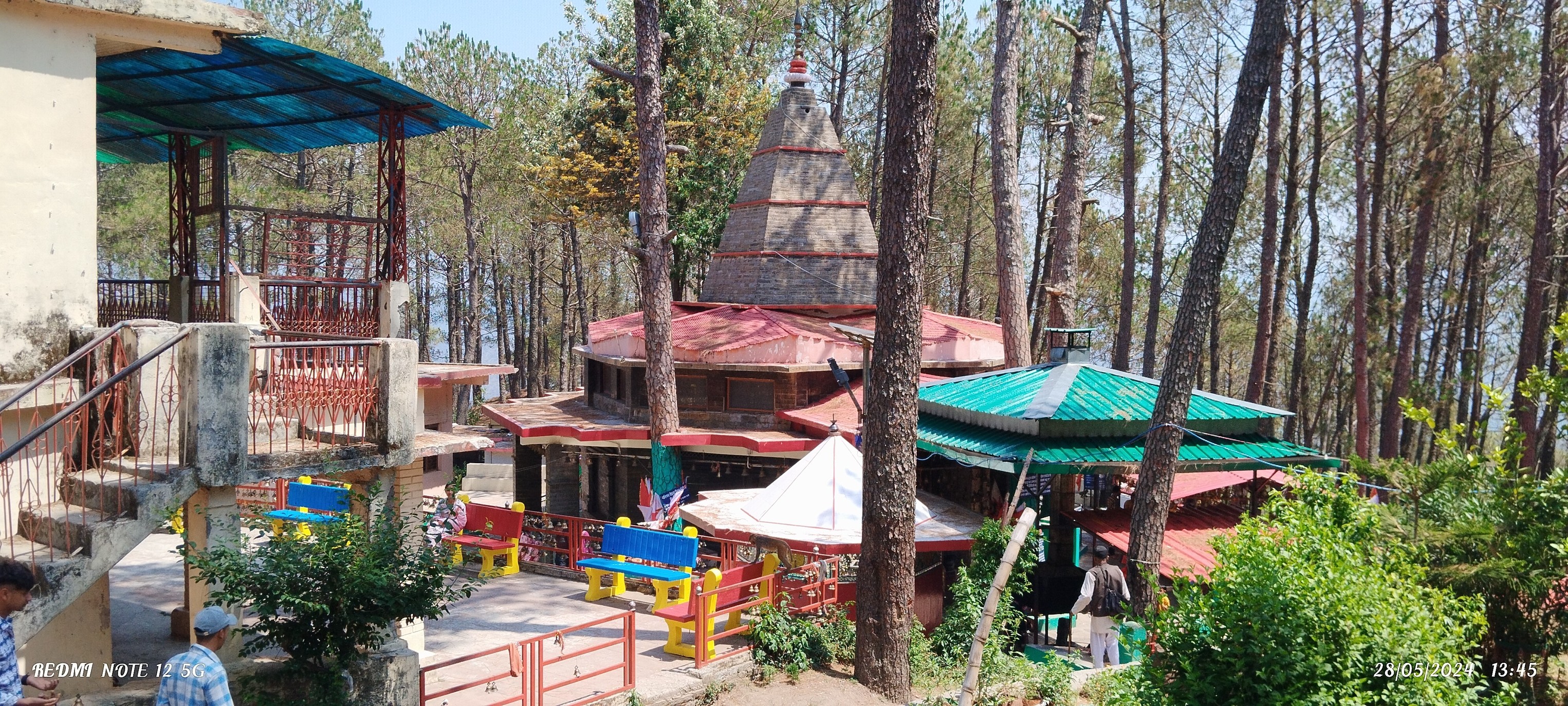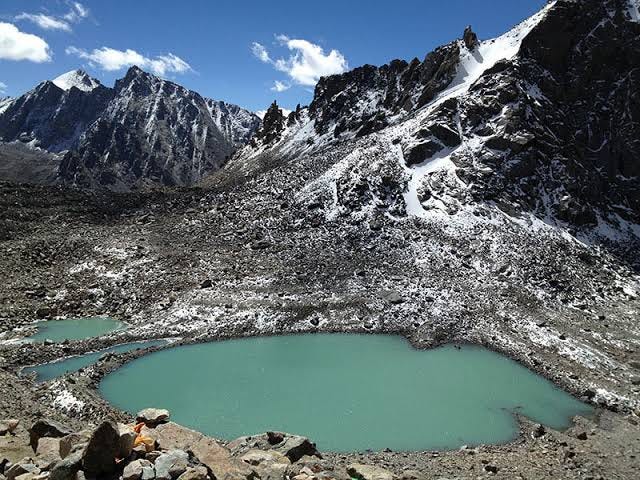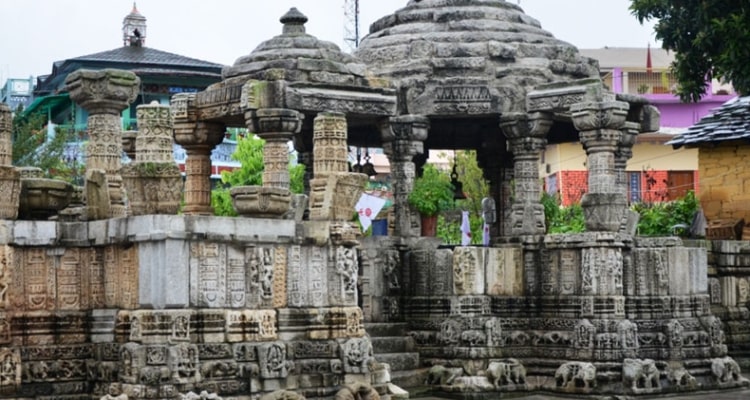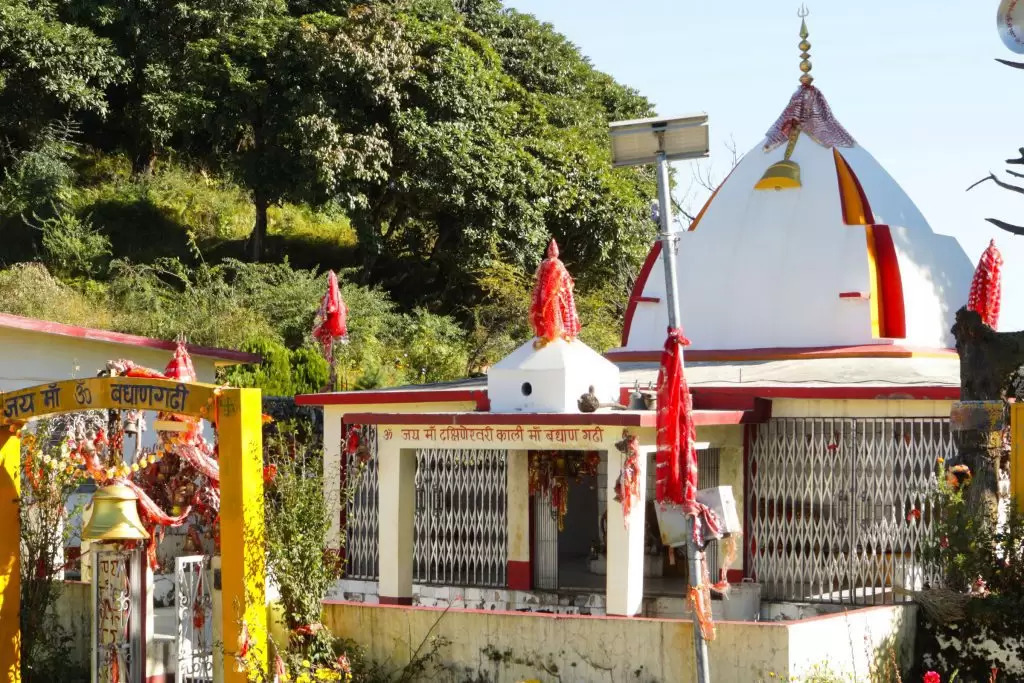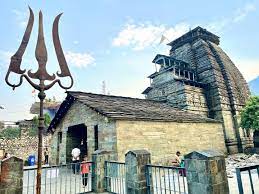High above the Gumkhal-Silogi road, in the village of कीर्तिखाल (Kirtikhal), sits a temple that doesn’t just watch the sunrise. It guards Garhwal. People call it भैरव गढ़ी मंदिर. Dedicated to काल भैरव, the fierce form of Lord Shiva, it lives in the roar of wind, sharp, cold dawns, and an old promise between mountain and faith.
Legend That Whispers in Wind
Folklore says that many years ago, this place was Langoor Garh, one of the 52 forts (गढ़) of old Garhwal. Gorkha armies tried to take it. They fought for many days. But they could not. The fort held because Bhairav’s name was on every stone here.
After the victory, the Gorkhas themselves offered a ताम्र-पत्र (copper plate) of forty किलो to the temple as a mark of respect. Locals still talk about that. They say the plate glowed in the sun.
In each sunrise, people feel that same energy. They say काल भैरव here is not only protector but also the one who loves black, black cloth, black night, black offerings.
A Walk Up to Spirit
You reach Kirtikhal first. From Lansdowne, the road bends up, past forests of pine and deodar, sometimes through patches of mist. At Gumkhal, you turn toward Kirtikhal market. Then begins a trek of about two to two and a half किलोमीटर (walking), upward, through the forest, with views opening slowly.
The path climbs gently first, then begins to steepen. Roots, stones, occasional puddles. Every step gives you glimpses: valley floors, other hills rising behind, birds calling. The smell of damp earth after rain. The cool air feels like a blessing on the skin.
Temple, Stone, and Devotion
At about 2,400 मीटर ऊँचाई, you arrive at Bhairav Garhi. The temple stands modest but proud. A square sanctum where the idol of काल भैरव waits, often draped in black cloth or smeared with offerings of मंडुए का आटा prasād (because Bhairav is said to favour black foods).
Next to him, a शक्तिकुंड where water gathers. Local women come here to fetch holy water. They bring बेलपत्र, दीये (lamps), फूल (flowers). A hall where villagers gather on Mondays, during सावन, or in festivals for भजन-कीर्तन and collective chanting.
The temple has smaller shrines, a शिवलिंग tucked behind the main idol, an idol of काली माता. Nandi sits to one side. Shadows move when people walk in, candles flicker, incense smoke drifts.
When the Soul of Place Rises
If you go at sunrise, everything changes. Light slips over peaks, touches the temple’s top edge first. Then the idol glows. The smoke of incense rises. Bells echo. Devotees whisper ॐ नमः शिवाय, kneel, offer water and flowers.
At festival-time (often mid-July to mid-August), the place hums. People from villages far off bring prasad, bring songs. The temple courtyard fills with laughter and chants. Little children run with spinning prayer flags. Elders recall old days, tell stories of the fort and of Bhairav’s power.
The View That Holds You
Bhairav Garhi is perched so high that, when the weather is clear, you see peaks in the distance, silver lines of the Himalaya, valleys tucked deep in green folds. Trees lean into the sky. Clouds drift below or just beside you.
You see Lansdowne hills, treetops, and fields far off. You feel the wind cutting through layers. When sun drops, shadows stretch long. Sky turns pink and orange. You feel, maybe for the first time, that God lives in total height, sky, light, and in small details, wood grain, stone carvings, the sound of a bell.
Rituals, Prasad, and Local Life
Here, people believe Bhairav loves black. That is why प्रसाद is of black things, mandue ka aata (finger millet flour) roti, sometimes a bit of black cloth tied as an offering. They come barefoot or in simple shoes. They carry flowers, milk, and incense.
On Mondays and in सावन, the temple fills. Women sing folk bhajans in Kumaoni, children play in the courtyard, and elders tell mythic tales. Some fast, others bring food for sharing. It is not a show—it is a community.
Best Time to Visit & Things to Know
Summers, spring, and autumn are the kindest. Days warm, nights chilly. Winters bring snow, and trails may hide. Monsoon brings rain, beautiful green, but the paths are slippery and the mist is heavy.
Go early in the morning if you can. Sunrise gives you something you carry inside. Water, snacks, a shawl, and good walking shoes. Respect the place: shoes off at the sanctum, silence during prayers, touch the stone only if locals permit.
What Stays After You Depart
You leave with heaviness in your legs, light in your heart. The smell of incense lingers in your hair. The image of bells vibrating, wood doors creaking. The taste of prasad made of mandua flour. The idea that faith is not always about grand rituals but about meeting the divine quietly, in places where heart’s pulse matches wind.
Later, in a quiet moment, you may close eyes and feel the memory of that sunrise, that chant, that wind over Garhwal’s ridges.
Closing
भैरव गढ़ी मंदिर is not polished. It is rugged as the hills around. It does not demand crowds. It does not need grandeur. It asks only for someone to walk up, fold hands, and believe a little.
If you ever make your way near Lansdowne or Gumkhal, take the path to Kirtikhal, climb that trek, and sit under the sky. Let the stone, the wind, the morning light do their work.
Because here, at Bhairav Garhi, devotion is simple. Raw. Human. Real. And sometimes, that is more than enough.

